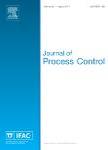版权所有:内蒙古大学图书馆 技术提供:维普资讯• 智图
内蒙古自治区呼和浩特市赛罕区大学西街235号 邮编: 010021

作者机构:Univ Waterloo Dept Chem Engn Waterloo ON N2L 3G1 Canada Carnegie Mellon Univ Dept Chem Engn Pittsburgh PA 15213 USA
出 版 物:《JOURNAL OF PROCESS CONTROL》 (工艺过程控制杂志)
年 卷 期:2019年第84卷
页 面:115-132页
核心收录:
学科分类:0711[理学-系统科学] 07[理学] 0817[工学-化学工程与技术] 08[工学] 070105[理学-运筹学与控制论] 081101[工学-控制理论与控制工程] 0811[工学-控制科学与工程] 0701[理学-数学] 071101[理学-系统理论]
基 金:Natural Sciences and Engineering Research Council (NSERC) Ontario Graduate Scholarship (OGS)
主 题:Explicit model predictive control Adjustable robust optimization Robust control
摘 要:Conventional model predictive control (MPC) involves solving an optimization problem online to determine the control actions that minimize a performance criterion function. The high computational expense associated with conventional MPC may make its application challenging for large-scale systems. Explicit MPC has been developed to solve the optimization problem offline. In this work, adjustable robust optimization is used to obtain the explicit solution to the MPC optimization problem offline for discrete-time linear time invariant systems with constraints on inputs and states. In the robust model formulation, an uncertain additive time-varying error is introduced to account for model uncertainty resulting from plant-model mismatch caused by un-measurable disturbances or process nonlinearities. The explicit solution is an optimal time-varying sequence of feedback control laws for the control inputs parameterized by the systems states. The control laws are evaluated in a time-varying manner when the process is online using state measurements. This study shows that the resulting control laws ensure the implemented control actions maintain the system states within their feasible region for any realizations of the uncertain parameters that are within the user-defined uncertainty set. Three case studies are presented to demonstrate the proposed approach and to highlight the benefits and limitations of this method. The proposed framework advances the development of Explicit MPC by further expanding its application to large as well as nonlinear systems. (C) 2019 Elsevier Ltd. All rights reserved.